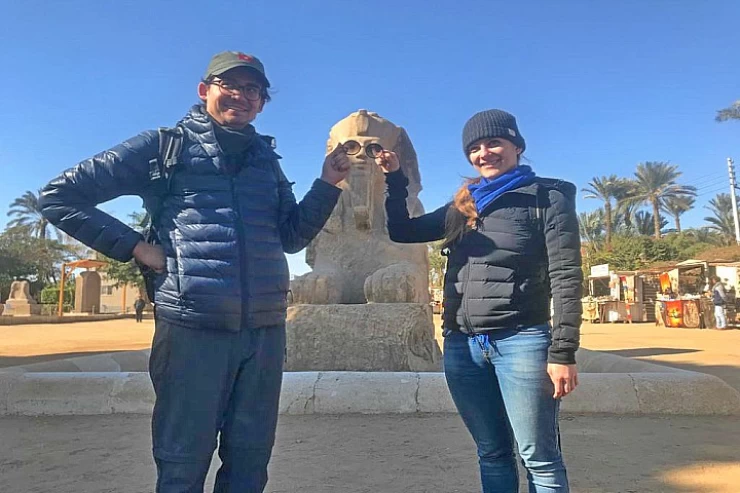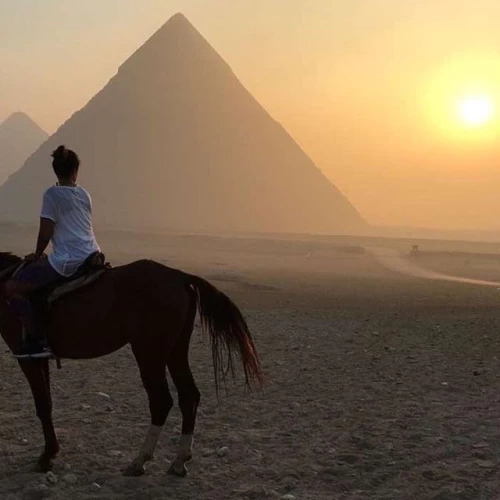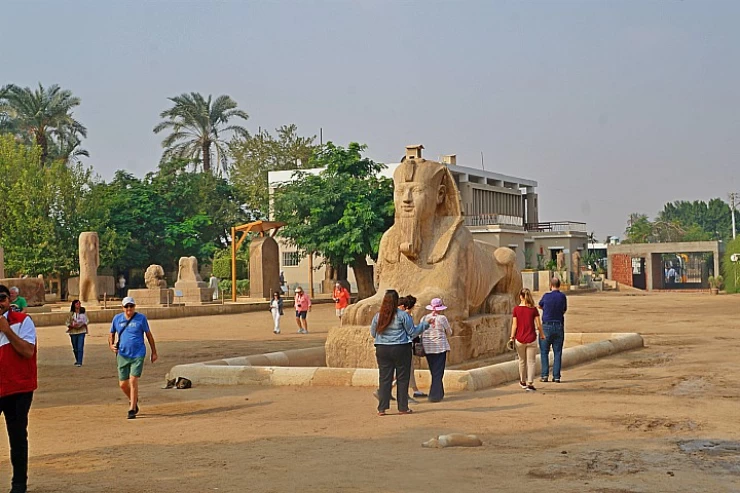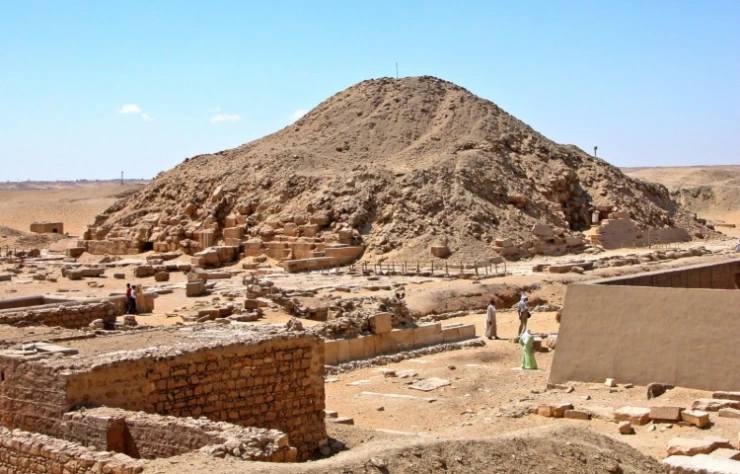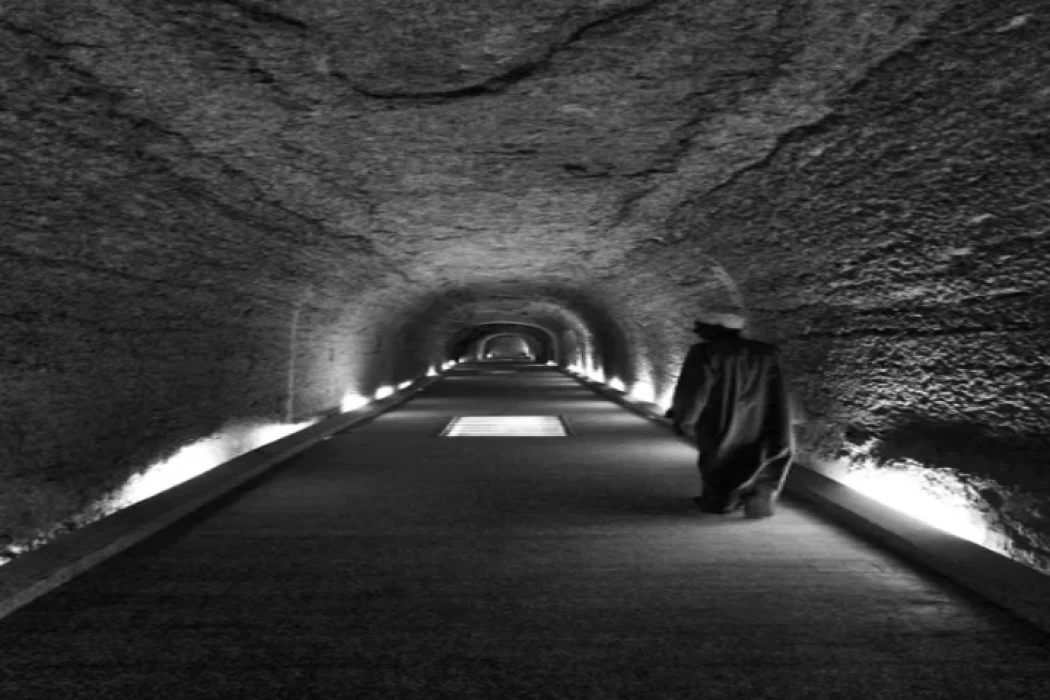
Discover Serapeum of Saqqara
The place of this Serapeum is located north of the funeral complex of Djoser in Lower Egypt. The bull, worshiped as a deity, was mummified and buried after devoting his life to ceremonies and offerings in his temple in Memphis.
It's known that the origin of this tomb dates back to the eighteenth Egyptian dynasty of the modern Egyptian kingdom. Its basis will be from the work of King Amenhotep III and its first witty extension to the reign of King Ramses II. It doesn't stop in progress; it continues to expand until the following Reigns and until the end of the ancient Egyptian era at the dawn of the Christian era.
The Discovery
Auguste Mariette The young researcher was inspired by the testimony of the ancient author and geographer Strabo, and was inspired by the road connecting the Luxor Temple and the courtyard of Amon-Ra in the Karnak Temple, and continued on this path surrounded by sphinxes, and then discovered the entrance to the catacombs intended to house the mummified bodies of the sacred bulls APIs.
The discovery caused a stir, especially at a time when the work of a real "treasure hunt" was organized and financed by the constantly competing Imperial governments of Europe and when Egyptology did not exist not yet this discovery would be one of the founding elements of Auguste Mariette in his desire to stop this organized plundering of the cultural riches of Egypt.
The origin of this tomb was two famous pharaohs of the modern Egyptian kingdom. Both entrusted one of their sons, the crown prince and the high priest of Ptah, with the task of organizing worship, supervising the construction of sacred buildings, and digging graves that were to house the relics of the god revered in Memphis in the form of the Holy Bull.
Before this date, the APIs Bulls were buried in individual tombs topped by a small temple dedicated to the funeral cult in the name of Serapis. its discovered that it's especially for Khemwas had the first mass grave was specially equipped for the remains of sacred bulls.
These catacombs expanded, and then multiplied by a new large gallery that will remain in service until the end of antiquity and the disappearance of the cult of sacred animals.
Description
Promo
During the Ptolemaic and Roman times, the whole formed a vast sacred enclosure connected to the valley by a road surrounded by statues of the famous sphinxes described by Strabo. Several chapels lined up in this sacred alley, which was used by processions during the funeral of the God APIs.
This way crossed the ancient necropolis for more than a kilometer, starting from the bobsteion Hill, avoiding the Titi funeral complex, leaving on its left the hill of Userkaf and Djoser, sunk west into the desert.
The road in the last quarter was surrounded by numerous temples and memorial monuments built by worshipers and dignitaries, and then ended, in the form of a turn, on a kind of courtyard on which Greco-Roman chapels and sanctuaries were built, including the construction of a semicircular APSE dedicated to the main Greek authors and philosophers. The statues discovered in this carousel are now kept in the Egyptian Museum in Cairo and are, for some, the only representations of these figures that antiquity has given us. The strange appearance of these brilliant thinkers, in a desert completely devoted to Egyptian cults, clearly reflects the desire of the two cultures to join forces.
Then Dromo continued the path towards the Serapeum enclosure and ended with a gate framed by reclining Lions, a monument built by Nakhtenpo I. Moreover, we owe to this monarch most of the sphinxes that line up along this long processional path and that today adorn the collections of many major museums in Europe and the USA.
The temple
From the temple dedicated to Sarapis, something is still visible today and it is very difficult to get an idea of how widespread it is, even if it most likely included the classical elements of the ancient Egyptian temple, with a edifice, gate, courtyards, the central part of the temple and the space in front of the temple. The readings recorded only in the time of Mariette allow us to assess the dimensions of the sacred square with an enclosure of more than 300 meters from the sides opening to the East by this gate placed in the axis of the temple. Individual burials laid during the Eighteenth Dynasty of Egypt and the beginning of the Nineteenth Dynasty of Egypt were located at the entrance to the main temple. I discovered and identified five individual niches surmounted by a temple for worship. Each grave consists of a ramp leading to a funeral chamber with two adjacent rooms.
Considering the foundations excavated during the excavation campaigns, the temple should have a size of more than 150 meters in length and a width of almost 100 m.it has a double enclosing wall open on two axes. The main one runs from East to West on the road axis, and the secondary one to the north on the cemeteries. Then inscriptions were found from different eras, in particular from the time of Nakhtenpo II, including elements from a temple dedicated to ISIS, who was associated with the mother of God APIs. This also received worship in Memphis and had Catacombs specially dedicated to the mummies of this sacred cow located to the northeast of the Serapeum complex in Saqqara.
Underground
The catacombs of APIs are located under the temple of APIs. The main element of this sanctuary today is therefore underground and consists of two galleries that Egyptologists, to distinguish them, describe as "small" and"large".
The "great underground passages" were opened during the reign of epsomatik I and were used until the end of antiquity, along an east-west axis that was expanded several times. It has more than thirty rooms, some of which are huge, interconnected by corridors and corridors. A large number of these twenty-four vaults still contain huge coffins of dark granite.
Thus, dating back to Ramesses II, each Apis Bull had a vault dedicated to him in this large mass grave whose entrance was walled up as soon as the mummy was placed in it. The stone sarcophagus. On this wall are pasted dedicatory plaques that most often indicate the period of the birth of the bull, the year of his installation in the temple of Ptah, as well as its age as the date of his burial, specifying the era in which this celebration took place. These paintings are precious items today because they allow us to shed light on Reigns that the royal chronicles have not preserved for us or about which we have few details.
Moreover, since most of the ancient documents that give us the king lists date back to the modern Egyptian kingdom, and these catacombs start from exactly this period, these paintings that cover the end of the entire Egyptian antiquity are sometimes the only evidence available to the Egyptologist to find out the length of the reign.
These paintings also make it possible to describe the stories told by ancient authors about the Persian period immediately preceding the Ptolemaic era. APIs were found buried not only during the reign of Dara I, but also during the reign of Cambyses II, which shows that the story reported by Herodotus was to some extent influenced by the anti-Persian propaganda that prevailed at that time in all provinces of the Achaemenid Empire. The Greeks especially cleverly coordinated.
During the Egyptian New Kingdom, these coffins were made of wood, and most of them did not survive their discovery. In the following periods, these coffins were carved from black and gray granite, basalt, and limestone and weighed up to a hundred tons. They still rest in the vaults of the Grand Gallery.
The Bulls were buried with funerary furniture similar to that found in classical Egyptian tombs. Jewelry, an amulet, an oshpati, and canopic utensils are all funerary objects necessary for embalming and intended to facilitate the passage of the deity in the West, the world of the dead.
Saqqara underwent restoration and consolidation works for several years and reopened to the public in September 2012.







